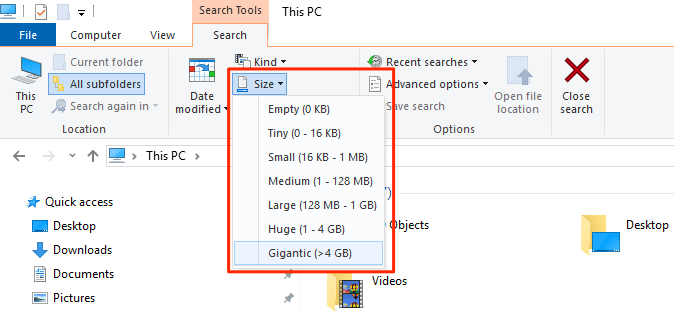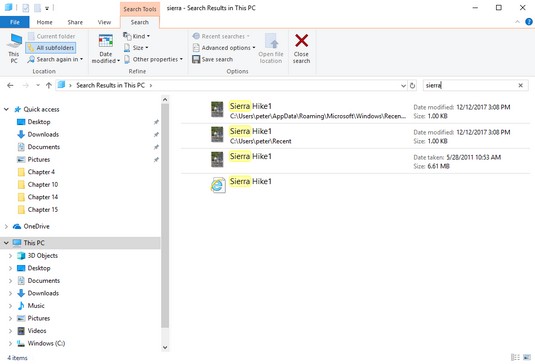

- #HOW TO SEARCH FILES IN WINDOWS 10 HOW TO#
- #HOW TO SEARCH FILES IN WINDOWS 10 WINDOWS 10#
- #HOW TO SEARCH FILES IN WINDOWS 10 PC#
- #HOW TO SEARCH FILES IN WINDOWS 10 WINDOWS 7#
Show hidden filesĭepending on your system configuration, you may not be able to see your files because they're hidden.

If you're able to find your files using search, right-click one of the files and select Open file location, and then make sure to move your data to the folder you want. When upgrading to a new version of Windows 10, sometimes your personal files will move to a different folder.

In addition, you can use the Kind drop-down menu to do quick searches, including for documents, pictures, videos, music, and more. For example, you can click the Advanced options drop-down menu and make sure to include non-indexed locations. For instance, you can use the *.doc search query to list all of your Microsoft Word documents.Īlso, you can use the File Explorer Search tab options to refine your search. If you're looking for a specific type of files, you can use the asterisk (*) as a wildcard. On the top-right, use the search box to locate your files.
#HOW TO SEARCH FILES IN WINDOWS 10 PC#
#HOW TO SEARCH FILES IN WINDOWS 10 WINDOWS 10#
You can also locate lost files using the search feature on Windows 10 with these steps: Then the last thing left to do is to backup and restore all your files to the newly created account you configured using a Microsoft account. Sign in with the Administrator account.Īfter completing the steps, you should see your files again using the local Administrator account.Search for Computer Management, click the top result to open the experience.Ĭomputer Management > Local Users and Groups > Users.To get back your missing personal files, you'll need to use the built-in local Administrator account using these steps:
#HOW TO SEARCH FILES IN WINDOWS 10 WINDOWS 7#
If you're upgrading from Windows 7 to Windows 10, and you created a Microsoft account during the process, your files may end up in the Administrator account, which is now disabled.
#HOW TO SEARCH FILES IN WINDOWS 10 HOW TO#
How to recover files using Administrator account Once you've completed the steps, the temporary account should go away, and you should now be able to access your documents, pictures, and videos from your original account. Note: It may take a few reboots until you see your account on the sign-in screen. Roaming options are currently unavailable," then reboot your computer. If you see a message at the top that reads: "You are logged on with a temporary profile. Next time, your search will be just one click away.You can quickly check if you're using a temporary profile using these steps: And if you think it’s a search you’re likely to perform again, go ahead and save it by clicking the Save Search button. You can select the whole year as a range and the view will keep zooming out until you can select an entire decade.ĭon’t forget, once you’ve selected your date range, you can also add other parameters like file name or file type to your search. When you do that, the calendar zooms out to show you the whole year.

How to Select a Date Range with the Mouse In fact, when you select options using the File Explorer UI, Windows is really just inputting those text searches for you. This means you can search using Boolean operators, file properties, kinds of files, and a lot more. RELATED: Use Advanced Query Syntax to Find EverythingĪnd if you’re a real keyboard junkie, know that Windows uses the Advanced Query Syntax for search commands. You could also use “Datecreated:” or just “date:” instead of “modified:” if you wanted to. The key is the two periods between the dates, which tells the search engine to use it as a range. How to Search a Date Range with the Keyboardįirst of all, if you like using the keyboard, you can easily select a date range by typing it in the search box in any folder, just like in previous versions of Windows.


 0 kommentar(er)
0 kommentar(er)
